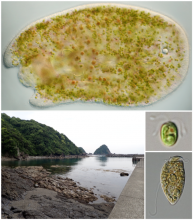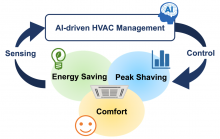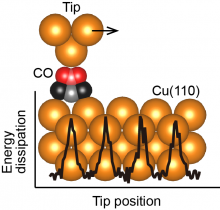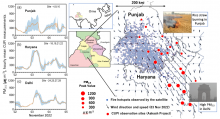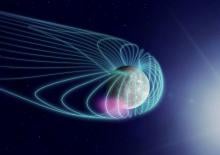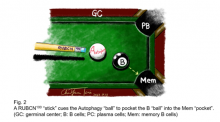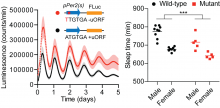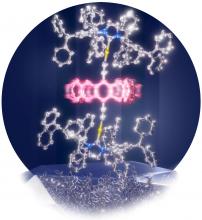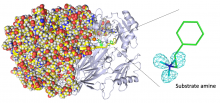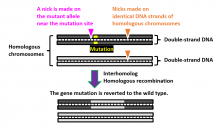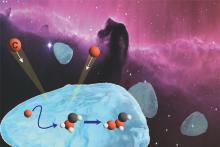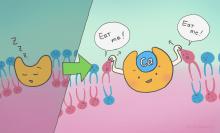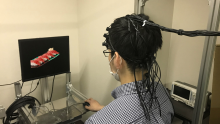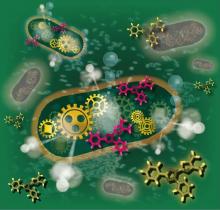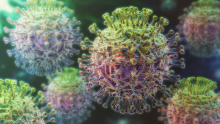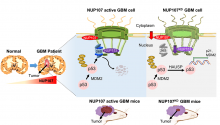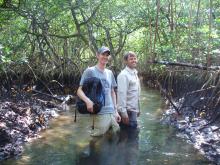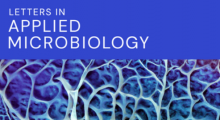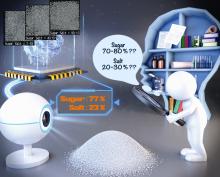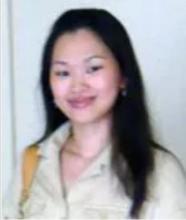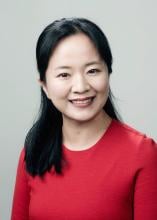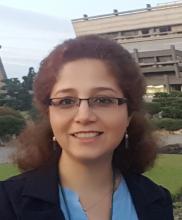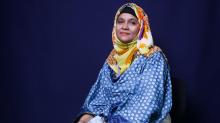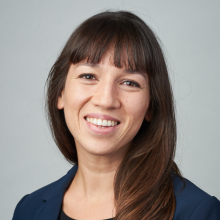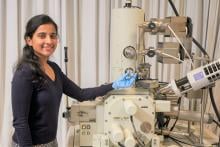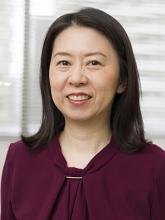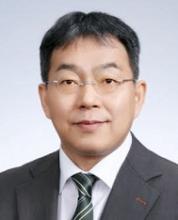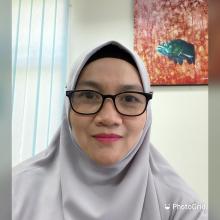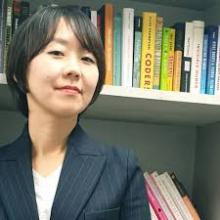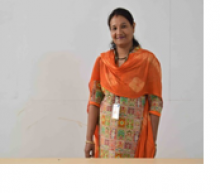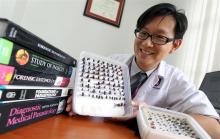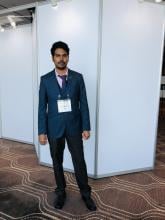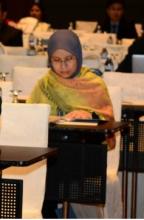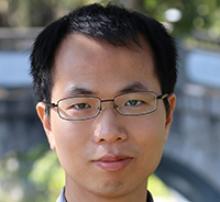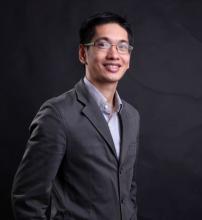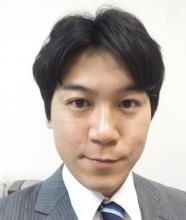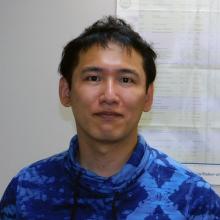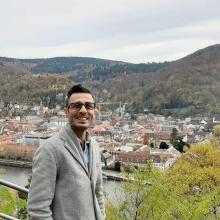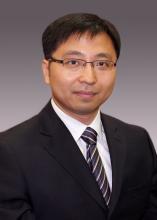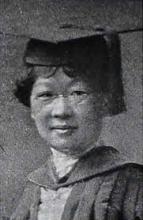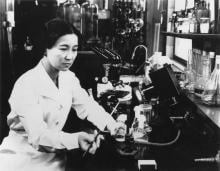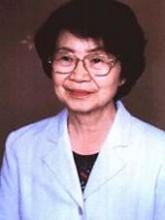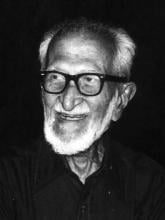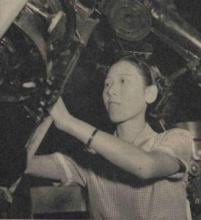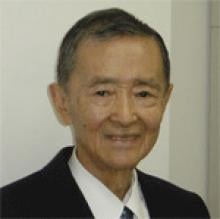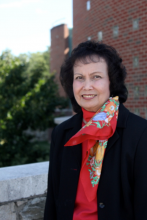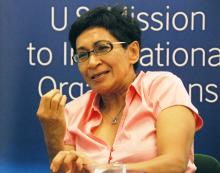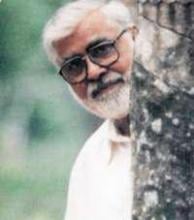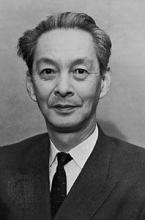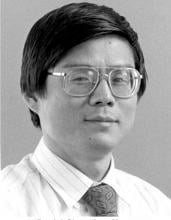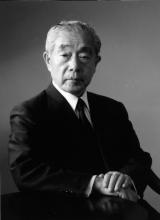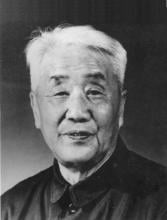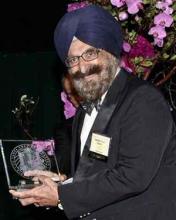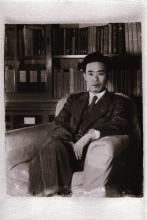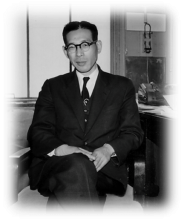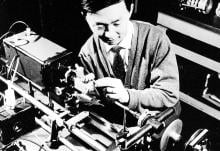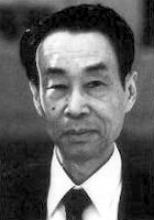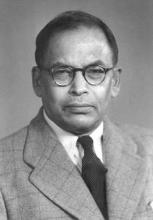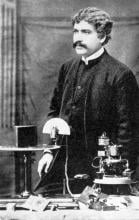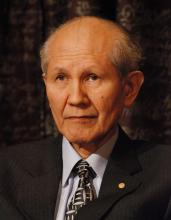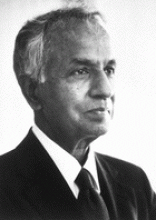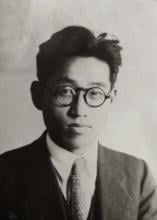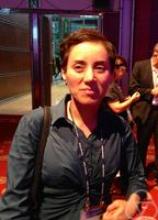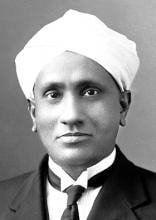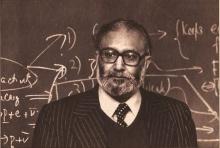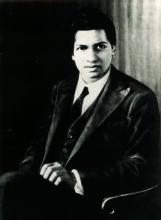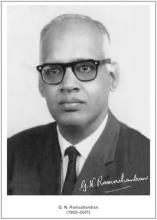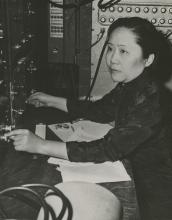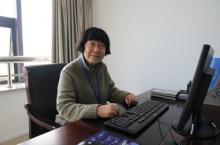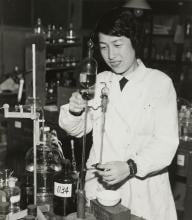Science
News
05 Oct 2023
Hunting for supermassive black holes, Coastal survival at risk, Calcium and dead cell clean-up, Two naps are better than one & Pineapple leaf prosthetics. Read all in the latest Editor's Choice.
05 Oct 2023
Acoels have been found to host a wide diversity of symbiotic, photosynthetic microalgae.
04 Oct 2023
Insect cyborgs may sound like something straight out of the movies, but hybrid insect computer robots, as they are scientifically called, could pioneer a new future for robotics. It involves using electrical stimuli to control an insect’s movement. Now, an international research group has conducted a study on the relationship between electrical stimulation in stick insects' leg muscles and the resulting torque (the twisting force that causes the leg to move).
03 Oct 2023
Researchers from Osaka University have developed a data-driven AI algorithm for controlling the heating and cooling of an office building. The system does not require ambient sensors or specific knowledge of the building’s rooms. During heating operations, the system was able to achieve energy savings of up to 30%, which can represent significant reductions to cost and environmental impact.
03 Oct 2023
Friction, an everyday phenomenon, has perplexed scientists for centuries. Though extensively researched, our understanding remains fragmented, primarily due to the multifaceted interactions that span across varying scales. Achieving an accurate grasp of the precise contact conditions between objects has been a longstanding challenge, a
feat recently made possible through advancements in scanning probe microscopy.
02 Oct 2023
The annual burning of crop residue in India causes widespread air pollution, particularly in the northwestern regions. A group of international researchers has used low-cost yet reliable instruments to gauge the effects of air pollution in these areas, making it the first quantitative study of its kind.
29 Sep 2023
Observations during two flybys by the Mio spacecraft as part of the BepiColombo International Mercury Exploration Project have revealed that chorus waves occur quite locally in the dawn sector of Mercury. Mercury's magnetic field is about 1% of that of Earth, and it was unclear whether chorus waves would be generated like on Earth. The present study reveals that the chorus waves are the driving source of Mercury’s X-ray auroras, whose mechanism was not understood.
29 Sep 2023
The authors discovered a shorter isoform of Rubicon called RUBCN100, which enhances autophagy in B cells.
29 Sep 2023
The authors identified a structure in the circadian mRNA Period2 that affects the sleep-wake cycle. The results indicate how translation and post-transcriptional processes influence the body’s internal clock and its impact on sleep patterns.
29 Sep 2023
Researchers at Osaka Metropolitan University have succeeded in printing uniformly sized droplets with a diameter of approximately 100 µm using a liquid film of fluorescent ink. This ink, with a viscosity roughly 100 times that of water, was irradiated with an optical vortex, resulting in prints of exceptional positional accuracy at the micrometer scale.
29 Sep 2023
Concave, umbrella-like metal complexes provide space to enable the largest molecular rotor operational in the solid-state.
20 Sep 2023
A team led by researchers at SANKEN (The Institute of Scientific and Industrial Research), at Osaka University has used neutron crystallography to image all of the atoms in a radical intermediate of a copper amine oxidase enzyme. They disclosed previously unknown details, such as precise conformational changes, that help to explain the enzyme's biochemistry. This work might help researchers engineer enzymes that facilitate unusual chemistry or are highly efficient at room temperature that are useful in chemical industry.
19 Sep 2023
An international group of researchers have discovered a previously unknown species of large foraminifer, shedding new light on the ecological evolution and biodiversity of coral reefs in the Ryukyu Islands.
15 Sep 2023
Researchers led by Osaka University developed a novel genome editing technique known as NICER, which results in significantly fewer off-target mutations than CRISPR/Cas9 editing. The technique uses a different type of enzyme that makes single-stranded “nicks” in the DNA. Repair of these nicks is more efficient and accurate than repair of double-strand breaks caused by the current CRISPR/Cas9 editing. This technique represents a novel approach for the treatment of genetic diseases caused by heterozygous mutations.
14 Sep 2023
Lab-based studies reveal how carbon atoms diffuse on the surface of interstellar ice grains to form complex organic compounds, crucial to reveal the chemical complexity in the universe.
14 Sep 2023
Scientists have found that extracellular calcium mediates the activation of a membrane protein that waves the flag signalling cell death
11 Sep 2023
Patients with a specific form of chronic indigestion react differently to images of food, compared to healthy control subjects or patients with irritable bowel syndrome.
11 Sep 2023
Elusive fundamental particles called neutrinos are predicted to interact unexpectedly with photons under extreme conditions.
11 Sep 2023
Researchers at Osaka Metropolitan University have developed a measurement technique that rapidly measures the number of viable bacteria in food products. They have succeeded in drastically reducing the inspection time from 2 days to about 1 hour. With this technology, it will be possible to confirm food safety before shipment from factories and prevent food poisoning.
08 Sep 2023
Capturing carbon dioxide, Shells go nuclear, Worms surf electric fields, Brain repair & Creating matter from light. Plus from our blog: Monitoring research for further impact. Read all in the latest Editor's Choice.
08 Sep 2023
Study addresses gaps in understanding of swine influenza A virus evolution and highlights need for early warning of disease emergence
05 Sep 2023
DishBrain reveals how human neurons work together to process information. Living model of brain could give insights into the mechanisms of how we understand and experience the world.
04 Sep 2023
Researchers from Osaka University have revealed that the expression of a specific isoform of GREB1 Is4 is induced in malignant melanoma cells by the melanocyte-specific transcription factor, MITF. They revealed that GREB1 Is4 stimulates pyrimidine biosynthesis and promotes cancer cell proliferation. Furthermore, the anti-tumor effect of antisense nucleic acids against GREB1 showed a potential new modality for malignant melanoma.
01 Sep 2023
Researchers at Kanazawa University report in Cell Reports how alterations in the nuclear pores lead to the degradation of anti-tumor proteins.
01 Sep 2023
Survey observations with the Subaru Telescope have led to the discovery of 22 quasars in the very distant universe. Their space density indicates the rapid emergence of supermassive black holes soon after the Big Bang, providing strong constraints on models of when, where, and how they formed and grew in cosmic space-time. The results also indicate a small quasar contribution to cosmic reionization, a major phase transition of the early universe.
01 Sep 2023
Research published today in Nature warns that rising seas will devastate coastal habitats, using evidence from the last Ice Age.
01 Sep 2023
Your eyes may reveal more than you think. That is what Tohoku University researchers have discovered, finding a link between certain types of decision making and eye movements.
31 Aug 2023
Applied Microbiology International (AMI) is boosting training and development opportunities for early career scientists in journal publishing with the appointment of 14 new junior editors on its flagship journal Letters in Applied Microbiology (LAM). They were selected from more than 100 applicants by the Editor-in-Chief, Dr Marcela Hernández.
29 Aug 2023
Machine learning model provides quick method for determining the composition of solid chemical mixtures using only photographs of the sample.
Events

21 Feb 2017
In this international conference, knowledge and experiences on mainstreaming Integrated Natural Resources and Environmental Management (INREM) in sustainable development will be shared among academics, researchers, and practitioners in environment and natural resources management.
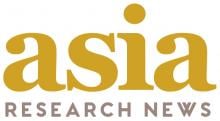
07 Nov 2016
The Frontiers in Cancer Science (FCS) 2016, our 8th annual conference, is jointly organized by the 6 major institutes in Singapore. Converging the latest cancer discoveries around the world, the meeting promises groundbreaking and innovative insights into cancer research.

26 Nov 2016
Breakthrough to Excellence and Develop Worldwide Opportunities! Welcome to APFCB 2016 in Taipei, Taiwan!

24 Oct 2016
PVSEC-26 will be held from 24-28 October 2016 in Singapore at the Sands Expo and Convention Centre. The main objective of the Conference is to give all PV communities a platform to present their latest findings in their area of expertise mainly at the scientific level, along with topics covering product development, new products and market trends.

13 Oct 2016
Select Bio and the Diagnostics Development Hub, part of Exploit Technologies Pte. Ltd. present Singapore’s Diagnostics Summit 2016

04 Oct 2016
Introducing the Second Annual Bioimaging Asia, taking place at Academia, within the Singapore General Hospital Campus, Singapore, 4-5 October 2016.

05 Dec 2016
SELECTBIO and the Singapore Institute of Manufacturing Technology (SIMTech), are pleased to present the Fourth Annual Lab-on-a-Chip Asia Conference and Exhibition, taking place at Academia, within the Singapore General Hospital Campus.

29 Sep 2016
“Contemporary Challenges, Sustainable Solutions”
27 Jul 2016
This year, we will hold its second symposium to further seek novel molecules and materials for dissecting and controlling mechano-nanoarchitectonics of life. Presentations in the symposium are made by a wide variety of speakers from material science, sensors and actuators, mechanochemistry, interfacial sciences, and of course biology.

30 Jun 2016
A conference organized by the World Association for Scientific Research and Technical Innovation (WASRTI)

30 Jun 2016
The conference is organized by the World Association for Scientific Research and Technical Innovation (WASRTI).

26 Jun 2016
On behalf of the ISEE-ISES AC2016 Sapporo organizing committees, it is great pleasure to welcome you to the 5th ISEE Asia Chapter and the first joint symposium of ISEE and ISES, Asia chapter. The program theme is “Environment, Health, and Sustainable Society” and will be held in Sapporo, Hokkaido, Japan on June 26-29th, 2016.

13 Jun 2016
The First International Symposium on Advanced Soft Matter: Celebrating the Kick-off of the Global Station for Soft Matter, GI-CoRE, Hokkaido University, Japan.

10 Oct 2016
AsiaNANO 2016 is the 8th in the series of Asian Conference on Nanoscience and Nanotechnology held in Sapporo, Japan.

18 Oct 2016
Malaysia Technical Scientist Association and Universiti Tun Hussein Onn Malaysia will collaborate to organize "2016 International Conference on Herbal Science, Technology & Medicine" to be held in Krabi, Thailand from October 18 -20, 2016.

10 May 2016
International Food and Tourism, Innovation, Invention & Creativity (iFaTIIC2016) is the 1st International Exhibition and Competition organised by Faculty of Hotel and Tourism Management, Universiti Teknologi MARA (UiTM) Puncak Alam Campus.

07 Apr 2016
This event which will be held in Taipei, Taiwan, will focus on an exciting area of research: Liquid (biofluid) biopsy development driven by circulating biomarkers such as circulating nucleic acids, circulating extracellular vesicles (such as exosomes) and circulating tumor cells (CTCs).

26 May 2016
Select Biosciences South East Asia is pleased to present Genomic Applications of qPCR, dPCR & NGS.

26 May 2016
SELECTBIO takes great pleasure in inviting you all to attend its Inaugural International Conference “Advanced Diagnostics 2016” scheduled to be held on May 26-27, 2016 at Sheraton Grand Bangalore Hotel at Brigade Gateway, Bengaluru, India.

26 May 2016
SELECTBIO brings to you its International Conference “Biomarkers India 2016” scheduled on May 26-27, 2016 at Sheraton Grand Bangalore Hotel at Brigade Gateway, Bengaluru, India.

28 Feb 2016
Scientists from around the world will meet in Hermanus, near Cape Town, South Africa, from 28 February to 1 March 2016 to discuss how best science can guide sustainable development globally.

22 Mar 2016
The 9th annual Biopharma Asia Convention 2016 brings together C-level attendees from pharmas, biotecs and service providers to learn and discuss market trends and biologic development strategies. With 7 premium conference tracks, the event will cover the entire spectrum of the biopharma value chain.

09 Dec 2015
Science International 2015 launches a campaign for "Open Data in a Big Data World" at Science Forum South Africa in Pretoria

22 Jan 2016
The Nagoya Medal Award is awarded every year to two organic chemists who have made significant original contributions to the field. This year’s Gold Medal is awarded to Professor Stuart Schreiber of the HHMI, Broad Institute of MIT & Harvard, Harvard University, USA and the Silver Medal is awarded to Professor Zhaomin Hou of RIKEN, Japan.

10 Oct 2016
Theme: Challenges and Innovations in Pharmaceutical Sciences

17 Nov 2015
The 26th TWAS General Meeting will focus on science in sustainable development. About 300 High-level scientists, policymakers, educators and others from more than 50 nations in the developing and the developed world are expected to attend the invitation-only event.

24 Feb 2016
Select Biosciences South East Asia is pleased to present the Second Annual Clinical Applications of Stem Cells, taking place on the 24-25 February 2016.

04 Nov 2015
The region's largest Infocomm Media Technology commercialisation showcase and networking event is back in its 5th year, featuring over 60 booths of technologies and solutions from Singapore's Agency for Science, Technology and Research (A*STAR), A*STAR licensees and partners, NRF, NTU, NUS, Kairos ASEAN, and SIAA.

16 Nov 2015
HIS'15 is the 15th International conference that brings together researchers, developers, practitioners, and users of soft computing, computational intelligence, agents, logic programming, and several other intelligent computing techniques.

21 Aug 2015
The Economist has forecasted 3D Printing to be the third industrial revolution due to its prospects of driving a new type of manufacturing industry. Prime Minister Lee Hsien Loong said in his National Day Rally 2013 that we should 3D print things that make a difference to our lives.
Researchers
Nanyang Technological University
Currently, Xuejiao Zhao is a Wallenberg-NTU Presidential Postdoctoral Fellow (PPF) at the LILY Research Centre, Nanyang Technological University (NTU), Singapore, working with Prof. Chunyan Miao. Her research interests are AI in Healthcare, Large Language Models, Knowledge Graphs, and Human-Computer Interaction.
She spent her first year of PPF in RPL, KTH Royal Institute of Technology working with Prof. Danica Kragic.
She obtained her DPhil (i.e. PhD) in the School of Computer Science and Engineering at NTU under the supervision of Prof. Chunyan Miao and Prof. Zhenchang Xing.
Assoc Prof Tan leads the Photonics Devices and Systems Group at Singapore University of Technology and Design (SUTD). Her interest lies in experimental optical physics, pertaining to the study of both nonlinear and linear optical phenomena, nanophotonics and quantum optics. One of the potential applications of her research is enhancing the transmission of data via the Internet by improving reliability and lowering costs.
Assoc Prof Yang and her research team from SUTD conducts research into water desalination as well as energy storage simultaneously. She developed a low dimensional nanomaterial to desalinate ocean water using a process of hybrid capacitive deionization. This process, allows for the processing of desalinated water more efficiently while also providing low-cost energy storage.
After spending three years of my life in the field of science communication, somewhere I found a bit shortage of women in the field of science. There could be more women in science if we support them. Working in the field of awareness and communication especially areas related to women. Disseminating science through various media including science communication through cartoons. I found communicating important aspects through popular science articles to be most fascinating.
Since September 2023, I am a researcher at Mainz University, Germany. Before that, I was an Assistant Professor of the Physics Department at the Institute for Advanced Studies in Basic Science (IASBS), Zanjan, Iran since Dec. 2015. However, in September 2012, I resigned from my faculty position in support of the "Woman, Life, Freedom" protest in Iran and now I am an exiled scholar. I have been a Junior Associate of the International Center of Theoretical Physics (ICTP), Trieste, Italy since January 2017 and a TWAS Young Affiliate member since 2018. I was a visiting researcher at ICTP-SAIFR, São Paulo, Brazil (June - Nov. 2015) under the TWAS fellowship, and also a Post-Doctoral fellow of the School of Physics in the Institute for Research in Fundamental Sciences (IPM) Tehran, Iran (Oct. 2012 - May 2015). I finished my Ph.D. in the Physics Department of Rheinische Friedrich-Wilhelms-Universität Bonn, Germany in Aug. 2012. I did also a one-year Postgraduate Diploma Programme of ICTP (2007-2008) in High Energy Physics.
Dr. Hasibun Naher is a mathematician working on numerical models related to natural disasters including storm surges, tsunami simulation, earthquakes, and energy. She is also interested in issues related to women in STEM, active learning, sustainable mathematics education and sustainable development using mathematical modeling,
My research focuses on the intersection between mobility, public space, and technological innovation. One of my current projects explores the role of the gig economy for women’s empowerment in Cambodia, Myanmar, and Thailand. I am especially curious to see how home-based gig work relate street vending, a typically women-based activity.
Nanyang Technological University
Dr. Sravya Tekumalla is currently a Principal Investigator in Nanyang Technological University, Singapore, where she works as a Presidential Postdoctoral Fellow. In addition, she also leads a small team of staff and students working in the domain of metal additive manufacturing (commonly known as 3D printing).
Tohoku University
I am a leading expert in the reconstruction of an artificial cell membrane as a novel system for screening side effects of drugs on the heart. This system can assess the potential risks of drugs that unintentionally interfere with the function of membrane proteins in the heart muscle.
Nagoya University
Professor Kazuaki Ishihara leads the laboratory of catalysis in organic synthesis at the Department of Molecular & Macromolecular Chemistry, Nagoya University, Japan.
Universiti Malaysia Sabah
Associate Professor Sitti Raehanah Muhamad Shaleh is the director of Borneo Marine Research Institute at Universiti Malaysia Sabah.
So Yeon Leem is a professor at Sookmyung Women’s University, South Korea, and an expert in Women in STEM and cosmetic surgery practices in the country.
Dr Anisa Qamar is a professor in Physics in the Department of Physics, University of Peshawar, Pakistan. She is also the President of Pakistan Physical Society.
1. An Applied Statistician and Operation Research specialist with 35 years of
experience in academic teaching, corporate consultancy, and professional
training.
2. Conducted sessions for women and senior citizens on mental health and coping skills.
3. An awardee of the Statistical Capacity Building award by the World
Bank.
4. Published technical articles in reputed journals as well as authored books and book chapters
5. Published author with nearly 3600 articles in leading newspapers and magazines in India.
Dr. Mamta Agrawal
BSc. (Maths, Physics, Chemistry), MSc. (Mathematics),
DCA (Diploma in computer applications)
MCA (Masters in computer applications)
PHD (Mathematics and Computational Biology)
POST DOC (Mathematics and Computational Biology)
completed two research projects: 1. WOS-A (DST New Delhi) 2. Indo-Austria research Projuect (DST-BMWF)
Visited Abrod four countries Thiland, South Korea, Austria, Nepal
Paper Pulication-18
ChpterPublication-1
Book Publication-1
Patent- going on
Hira Khalid is an associate professor at the Department of Chemistry of Forman Christian College University, Lahore, Pakistan.
Aparna B. Gunjal is a microbiologist at Dr. D.Y. Patil, Arts, Commerce & Science College, India.
Universiti Teknologi MARA (UiTM)
Dr Heo is currently a senior lecturer at the Department of Microbiology and Parasitology, Faculty of Medicine, Universiti Teknologi MARA, Malaysia.
Korea Advanced Institute of Science and Technology (KAIST)
Ordered Functional Materials, like, COFs, COPs, CTFs for membrane applications (soft actuators and energy storage & conversion)
International Islamic University Malaysia (IIUM)
Diana is Assistant Professor and Ergonomics Trained Person at the Department of Psychology, International Islamic University Malaysia.
Hong Kong Baptist University (HKBU)
Associate Professor at Hong Kong Baptist University researching hydroclimatology, climate extremes and water hazards.
De La Salle University
Michael Angelo B. Promentilla is a Professor of Chemical Engineering and the head of the Waste and Resource Management Unit of the Center for Engineering and Sustainable Development Research (CESDR) at De La Salle University (DLSU).
Hokkaido University
Shinya Furukawa is an associate professor at the Institute for Catalysis, Hokkaido University, Japan.
Hokkaido University
A pioneering researcher in Systems Chemistry for autonomous behavior in multi-molecular systems. The interdisciplinary field of chemistry and physics can be contributes the development in micro-robotics and comprehension of origin-of-life.
Institute for Integrated Cell-Material Sciences (iCeMS) at Kyoto University
My research background covers multidisciplinary fields such as Pharmaceutics, Cancer Nanomedicine, Bioengineering and Organ-on-a-chip platforms. My current research focuses on the development of dynamic biological barriers on a chip such as blinking human cornea on a chip.
Hokkaido University
Professor, Faculty of Environmental Science, Hokkaido University
The Chinese University of Hong Kong (CUHK)
Li Zhang is an Associate Professor in the Department of Mechanical and Automation Engineering (MAE) and an associate faculty member in Chow Yuk Ho Technology Centre for Innovative Medicine (TIM) and T Stone Robotics Institute (CURI) at The Chinese University of Hong Kong (CUHK). He is also the co-director of CAS SIAT-CUHK Joint Laboratory of Robotics and Intelligent Systems.
Hong Kong Baptist University (HKBU)
Dr. Zhifeng Huang is a professor at Hong Kong Baptist University, and associate director of nanomaterials at HKBU's Golden Meditech Centre for NeuroRegeneration Sciences. He co-founded Mat-A-Cell Ltd.
Kanazawa University
Dept of Medical Neuroscience, School of Medicine, Kanazawa University
Giants in history
Chinese biochemist Chi Che Wang (1894 - 1979), one of the first Chinese women to study abroad, advanced to prominent research positions at American institutions including the University of Chicago and the Northwestern University Medical School.
Ruby Sakae Hirose (1904 – 1960) was a Japanese-American scientist whose research contributed significantly to our understanding of blood clotting, allergies and cancer.
Chinese electron microscopy specialist Li Fanghua (6 January 1932 – 24 January 2020) facilitated the high-resolution imaging of crystal structures by eliminating interference.
Sálim Moizuddin Abdul Ali (12 November 1896 – 20 June 1987), commonly referred to as the Birdman of India, was the first person to conduct systematic surveys of birds from across India.
Haisako Koyama (1916 – 1997) was a Japanese solar observer whose dedication to recording sunspots – cooler parts of the sun’s surface that appear dark – produced a sunspot record of historic importance.
Michiaki Takahashi (17 February 1928 – 16 December 2013) was a Japanese virologist who developed the first chickenpox vaccine.
Toshiko Yuasa (11 December 1909 – 1 February 1980) was the first Japanese female physicist whose research on radioactivity shed light on beta decay – the process in which an atom emits a beta particle (electron) and turns into a different element.
Angelita Castro Kelly (1942-2015) was the first female Mission Operations Manager (MOM) of NASA. She spearheaded and supervised the Earth Observing System missions during its developmental stage.
Malaysia’s first astrophysicist, Mazlan binti Othman (born 11 December 1951) was instrumental in launching the country’s first microsatellite, and in sending Malaysia’s first astronaut, Sheikh Muszaphar Shukor, into space.
Known as Mr. Natural Rubber, chemist and researcher B. C. Shekhar (17 November 1929 – 6 September 2006) introduced a number of technical innovations that helped put Malaysia’s natural rubber industry on the world map.
Shinichiro Tomonaga (31 March 1906 – 8 July 1979), together with Richard Feynman and Julian Schwinger, was awarded the Nobel Prize in Physics in 1965, for their contributions to advance the field of quantum electrodynamics. Tomonaga was also a strong proponent of peace, who actively campaigned against the proliferation of nuclear weapons and promoted the peaceful use of nuclear energy.
South Korean theoretical physicist Daniel Chonghan Hong (3 March 1956 – 6 July 2002) achieved fame in the public sphere through his research into the physics of popcorn.
Japanese chemist Kenichi Fukui (4 October 1918 – 9 January 1998) was the first Asian scientist to be awarded the Nobel Prize in Chemistry. Together with Roald Hoffman, he received this honour in 1981 for his independent research into the mechanisms of chemical reactions.
Chinese palaeontologist, archaeologist and anthropologist Pei Wenzhong (January 19, 1904 – September 18, 1982) is regarded as a founder of Chinese anthropology.
Physicist Narinder Singh Kapany (31 October 1926 – 4 December 2020) pioneered the use of optical fibres to transmit images, and founded several optical technology companies. Born in Punjab, India, he worked at a local optical instruments factory before moving to London for PhD studies at Imperial College. There, he devised a flexible fibrescope to convey images along bundles of glass fibres.
Japanese physicist Ukichiro Nakaya (1900-1962) made the world’s first artificial snowflakes. He started his research on snow crystals in the early 1930s at Hokkaido University, where there is an unlimited supply of natural snow in winter. By taking over 3,000 photographs, he established a classification of natural snow crystals and described their relationship with weather conditions.
The field of solid-state ionics originated in Europe, but Takehiko Takahashi of Nagoya University in Japan was the first to coin the term ‘solid ionics’ in 1967. ‘Solid-state ionics’ first appeared in 1971 in another of his papers, and was likely a play on ‘solid-state electronics’, another rapidly growing field at the time.
Charles Kuen Kao (Nov. 4, 1933 to Sept. 23, 2018) was an engineer who is regarded as the father of fibre optics. His work in the 1960s on long distance signal transmission using very pure glass fibres revolutionized telecommunications, enabling innovations such as the Internet.
Chika Kuroda (24 March 1884 – 8 November 1968) was a Japanese chemist whose research focussed on the structures of natural pigments.
Motoo Kimura (13 November 1924 – 13 November 1994) was a Japanese theoretical population geneticist who is best remembered for developing the neutral theory of molecular evolution.
Meghnad Saha (6 October 1893 – 16 February 1956) was an Indian astrophysicist best known for formulating the Saha ionization equation which describes the chemical and physical properties of stars.
Sir Jagadish Chandra Bose (30 November 1858 – 23 November 1937) was a scientist and inventor who contributed to a wide range of scientific fields such as physics, botany and biology.
Osamu Shimomura (27 August 1928 – 19 October 2018) was a Japanese organic chemist and marine biologist who dedicated his career to understanding how organisms emitted light.
Subrahmanyan Chandrasekhar (19 October 1910 – 21 August 1995) was an Indian astrophysicist who studied the structure and evolution of stars.
Joo-myung Seok (November 13, 1908 – October 6, 1950) was a Korean butterfly entomologist who made important contributions to the taxonomy of the native butterfly species in Korea.
Mathematician Maryam Mirzakhani (12 May 1977 – 14 July 2017) was the first and only woman and Iranian to date to win the Fields Medal in 2014 for her work on curved surfaces.
Sir Chandrasekhara Venkata Raman (7 November 1888 – 21 November 1970) was an Indian physicist who performed ground-breaking research in the field of light-scattering.
Mohammad Abdus Salam (29 January 1926 – 21 November 1996) was a theoretical physicist and the first Pakistani to receive a Nobel Prize in science.
Srinivasa Ramanujan (22 December 1887 – 26 April 1920) was a math prodigy and widely considered one of India’s greatest mathematicians. Despite having almost no formal training in mathematics, he made substantial contributions to mathematical analysis, number theory, infinite series and continued fractions.
Gopalasamudram Narayanan Ramachandran (8 October 1922 – 7 April 2001) is best known for developing the Ramachandran plot to understand the structure of short chains of amino acids, known as peptides.
Hitoshi Kihara (1893 – 1986) was one of the most famous Japanese geneticists of the 20th century. One of his most significant contributions was identifying sex chromosomes (X and Y) in flowering plants.
Chien-Shiung Wu (31 May 1912 – 16 February 1997) was an experimental physicist who made several important contributions to nuclear physics. Wu worked on the Manhattan Project – a top-secret program for the production of nuclear weapons during World War II and helped to develop a process for separating uranium into U235 and U238.
Meemann Chang (born 17 April 1936) is a Chinese palaeontologist who studied the fossils of ancient fish to understand the evolution of life. By examining fossils, she uncovered new insights on how vertebrates, animals with a backbone, migrated from the sea and became adapted to live on land.
Bibha Chowdhuri (1913 – 2 June 1991) was an Indian physicist who researched on particle physics and cosmic rays. In 1936, she was the only female to complete a M.Sc. degree at the University of Calcutta.
Lin Lanying (7 February 1918 – 4 March 2003) was a Chinese material engineer remembered for her contributions to the field of semiconductor and aerospace materials. Lanying was born into a family who did not believe in educating girls and she was not allowed to go to school.
Japanese geochemist Katsuko Saruhashi developed the first method and tools for measuring carbon dioxide in seawater




